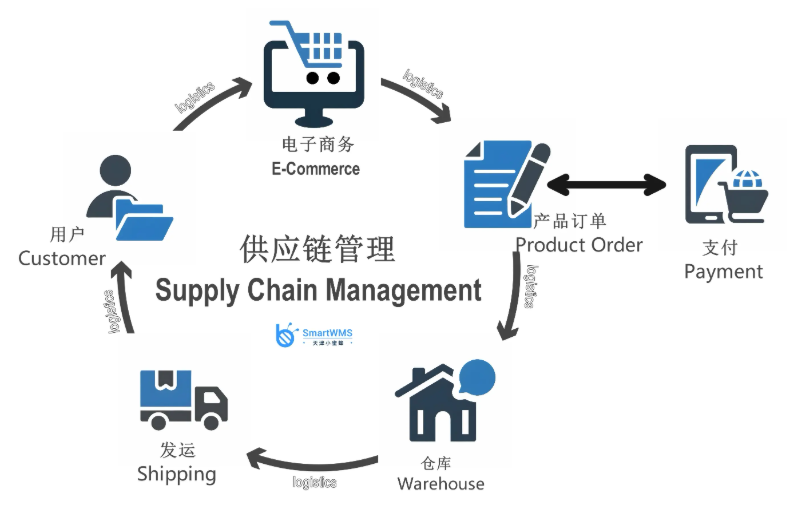Contact:miachen
Cell phone:137 1535 8244
Telephone:0755-8670-0446
Address:5J-5K, Jinyun Century Building, No. 6033 Shennan Avenue, Futian District, Shenzhen

The following is an introduction to the supply chain management and program optimization business:
Supply chain management
Supply chain management is a series of management activities that plan, organize, coordinate, and control the logistics, information flow, capital flow, and trade partnerships in the supply chain to achieve the purpose of improving supply chain efficiency, reducing costs, and enhancing competitiveness, so as to meet customer needs.
- ** Manage content **
- ** Supplier Management **: Including supplier selection, evaluation, certification and relationship maintenance. By establishing strict supplier screening standards, selecting suitable suppliers and regularly evaluating their performance, to ensure that the products and services provided by suppliers meet the requirements of the enterprise, while establishing long-term and stable cooperative relationships to achieve win-win results.
- ** Procurement Management **: involves the formulation of procurement plans, purchase order processing, price negotiation, etc. According to the production plan and inventory situation of the enterprise, formulate a reasonable procurement plan to ensure the timely supply of raw materials and parts, and at the same time reduce procurement costs through price negotiation and procurement strategy optimization with suppliers.
- ** Production planning and control **: According to market demand forecast and order situation, formulate production plan, arrange production schedule reasonably, coordinate various resources in the production process, and ensure that products are produced on time, according to quality and quantity. At the same time, real-time monitoring and adjustment of the production process is carried out to solve problems in production in a timely manner to ensure the smooth progress of production.
- ** Logistics and Warehouse Management **: covering the transportation, warehousing, distribution and other links of goods. Optimize the logistics distribution route, select the appropriate transportation mode and logistics service provider, improve logistics efficiency and reduce logistics costs. At the same time, rationally plan the warehouse layout, manage the inventory level, and ensure the safe storage and timely supply of goods.
- ** Demand forecasting and order management **: Through the analysis and prediction of market trends, customer needs and other factors, it provides a basis for the production, procurement and other activities of the enterprise. At the same time, efficiently process customer orders, from order receipt to order delivery, to ensure accurate execution of orders and customer satisfaction.
- ** importance **
Enhance customer satisfaction: By optimizing all aspects of the supply chain, ensure that products can be delivered to customers in a timely and accurate manner, and improve product quality and service levels, thereby enhancing customer satisfaction and loyalty.
- ** Reduce costs **: By rationally planning procurement, production, logistics and other activities, reduce inventory costs, transportation costs, production costs, etc., and improve the economic efficiency of enterprises.
Enhance enterprise competitiveness: Efficient supply chain management allows enterprises to respond quickly to market changes, adjust production and supply strategies in a timely manner, and gain an advantage in market competition.
###Solution optimization business
- ** Definition **: Program optimization business refers to the analysis, evaluation and improvement of existing supply chain solutions to improve the performance and efficiency of the supply chain. Through the use of various data analytics tools and management methods, identify bottlenecks and problems in the supply chain, and propose targeted optimization measures to achieve continuous improvement of the supply chain.
- ** Optimized content **
- ** Process optimization **: sort out and analyze various business processes in the supply chain, remove cumbersome links, optimize process sequence, and improve process efficiency and transparency. For example, optimize the procurement process, reduce the approval process, and shorten the procurement cycle; optimize the logistics and distribution process to improve the efficiency and accuracy of distribution.
- ** Cost optimization **: Identify opportunities to reduce costs by analyzing the cost structure. For example, negotiate more favorable purchase prices with suppliers, optimize inventory management to reduce inventory holding costs, optimize logistics distribution routes to reduce transportation costs, etc.
- ** Service Level Optimization **: Committed to improving the level of Client Server to ensure timely delivery and high quality of products. It can be achieved by optimizing the order processing process, improving inventory turnover, and strengthening communication with customers.
Network layout optimization: According to market demand, supplier distribution, logistics costs and other factors, optimize the network layout of the supply chain, including the location and layout of production bases, warehouses, distribution centers, etc. A reasonable network layout can reduce transportation costs, improve logistics efficiency, and shorten product delivery time.
- ** Optimization method **
- ** data analytics **: Collect and analyze various data in the supply chain, such as sales data, inventory data, logistics data, etc., to mine potential problems and optimization points through data analytics. For example, through the analysis of sales data, predict market demand, rationally adjust inventory levels and production plans.
- ** Simulation and Modeling **: Using computer simulation and mathematical modeling technology, simulate and evaluate different supply chain solutions, compare the advantages and disadvantages of various solutions, and choose the best solution. For example, through logistics distribution models, optimize distribution routes and vehicle scheduling to reduce logistics costs.
Benchmarking Management: By comparing and analyzing the supply chain of an enterprise with that of an outstanding enterprise in the industry, we can learn from advanced management experience and methods to identify our own gaps and improvement directions.
- ** Continuous improvement **: Establish a continuous improvement mechanism, regularly evaluate and adjust the supply chain plan, and optimize the supply chain plan in time to adapt to the changing situation as the market environment, customer needs, and internal conditions of the enterprise change.
Supply chain management and its program optimization are crucial for enterprises to improve their competitiveness, reduce costs, and meet customer needs in a complex market environment, and are one of the key factors for enterprises to achieve sustainable development.
 扫一扫咨询微信客服
扫一扫咨询微信客服